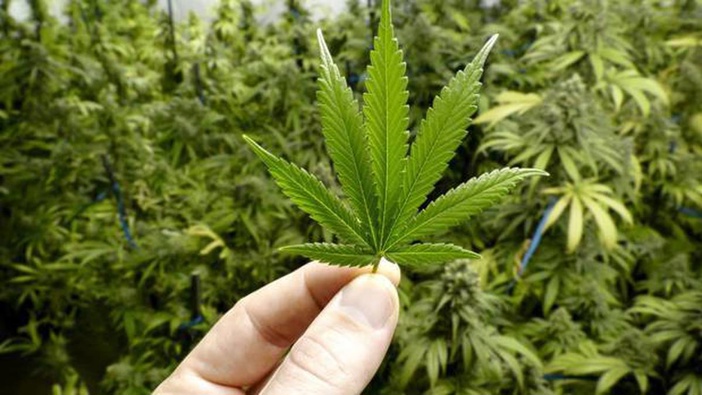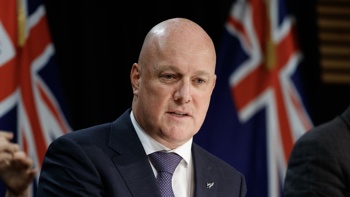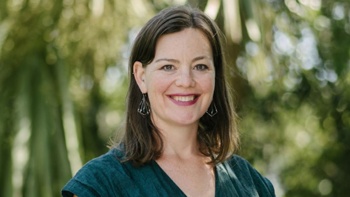Follow
the podcast on

A national cap on the amount of cannabis that can be grown and heavy fines, including jail time, for unlawful sale or supply are key features of the proposed framework for legalising cannabis for personal use.
But fines for underage (younger than 20) possession are comparatively light, and could even be waived if the young offender agreed to a drug treatment or education programme.
"We don't want to criminalise a younger offender, but we do want to criminalise those seeking to exploit or take advantage of young people," Justice Minister Andrew Little told the Herald.
This morning Little released the latest version of the Cannabis Legislation and Control Bill, which sets out what a legal market for personal use would look like.
Voters will decide whether to legalise cannabis for personal use, with a referendum planned alongside the September 19 election asking voters to support or oppose the bill.
Many details of the proposed framework have already been released, but today's release includes new details including about proposed taxes and punishments.
The cap on national production would be set by a new national cannabis authority with a view to reduce overall consumption and draw users away from the black market.
One producing business would not be able to contribute more than 20 per cent of the national supply.
The authority would also allocate share of cannabis production to ensure that Maori and economically deprived areas are able to fairly participate.
"We wouldn't want a market dominated by corporate players," Little said.
"We want to minimise community harm, but also allow a community level of involvement in any harvesting and supply."
People with cannabis convictions for personal use would not be automatically disqualified from getting a licence to produce cannabis.
The authority, advised by an independent expert committee, would also set prices and the limit on THC potency.
Little said it would be a year to 18 months before the framework could be implemented if there was a majority 'yes' vote.
That was because a legislative process would still need to be worked through, and the authority and advisory committee would need to be established.
Legal cannabis would also be introduced in stages, firstly with dried or fresh cannabis and cannabis seed, and products such as edibles would be considered later.
Cannabis-infused beverages, injectables, or products that included tobacco or alcohol would be banned.
A therapeutic not criminal approach
The proposed fines or jail time would aim to cripple gangs or even encourage them to turn their illegal trade into a legal one.
A $100,000 fine could be imposed on a business or two years' jail for an individual for unlawful cannabis sales, or the offer of such sales.
This would ramp up to a $150,000 fine for a business or four years' jail for an individual for selling to someone under 20 years old.
Personal use fines are much smaller: a $200 to $500 fine for buying or possessing more than the proposed legal limit of 14g of cannabis, or for smoking a joint in public, and $100 to $200 fine for underage possession.
Blowing joint smoke into an underage person's face could see a fine between $500 and $1000.
Little said the Government wanted to use a therapeutic rather than a criminal approach, and fines for people under 20 could be dropped if the offender agreed to a treatment or education programme.
The legal cannabis industry would be hit with excise tax, GST and levies ring-fenced for drug treatment and education programmes - though the level of the tax or levies have not been specified.
The Justice Minister will determine the levy in consultation with the Finance Minister.
An analysis commissioned by the Drug Foundation found that a 15 per cent excise tax could yield up to $240 million a year for treatment programmes.
Drug Foundation executive director Ross Bell said the bill was world-leading, with a proper focus on public health and helping young people.
"It will bring much needed new revenue to regions laid low by Covid-19, and will put hundreds of millions of new tax dollars into health and education programmes."
Little said there was no gauge at this stage on how much funding the Government would want to fund such programmes.
Other details of the proposed framework have been previously released and include a purchase age of 20 or older, a ban on public consumption, advertising and online sales, and a daily purchase limit of 14g of dry leaves a day - or the equivalent of about 40 joints.
Cannabis use would only be legal at home or in specialised bars, where products in plain packaging and with health warnings could be bought.
How visible would the industry be?
Little said the proposed regime was aimed at reducing the visibility of a legal market - though he said it was unclear at this stage whether a ban on advertising would prevent a legal cannabis cafe from having, for example, a marijuana leaf across the storefront.
Such cafes would be able to decorate their premises but not in a "come and consume your cannabis here" way, he said.
"It's about not marketing the consumption of cannabis generally."
Limited home-growing (two plants for a household of one, or up to four for a household of at least two 20+ year-olds) would also be allowed.
The aim of the bill is to reduce cannabis-related harm, and a key question for voters is whether they think the status quo is better at minimising such harm than the proposed framework.
Little would not say how he was going to vote, but he noted a positive trend in legalisation and decriminalisation in other jurisdictions.
"In other countries, once there's been a liberalisation of cannabis law, drug use among young people has moved down. That's happened in Portugal and Uruguay."
Cannabis for personal use has been legal in Canada since October 2018, and since then consumption has increased overall, but daily or near-daily use has remained largely the same.
But in the key age group of 15 to 17, who are more susceptible to cannabis-related harm, the proportion of people who had used cannabis in the last three months almost halved - from 19.8 per cent before legalisation to 10.4 per cent after legalisation.
The biggest increase, both in three month and daily or near-daily use, came from men 65 and over.
The wording of the cannabis referendum question has been confirmed as a straight Yes/No question:
Do you support the proposed Cannabis Legalisation and Control Bill?
Yes, I support the proposed Cannabis Legalisation and Control Bill
No, I do not support the proposed Cannabis Legalisation and Control Bill
The Government has described the referendum as binding, and political parties have said they will honour the result of the referendum.
But the bill can be progressed, changed or left to languish on the Order Paper, depending on the make up and will of the next Parliament.
Take your Radio, Podcasts and Music with you









